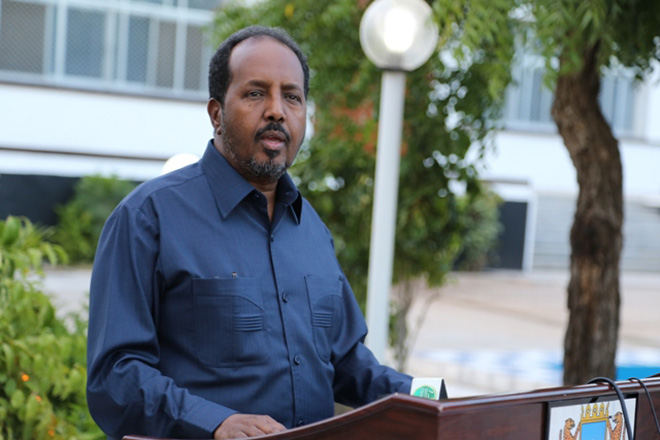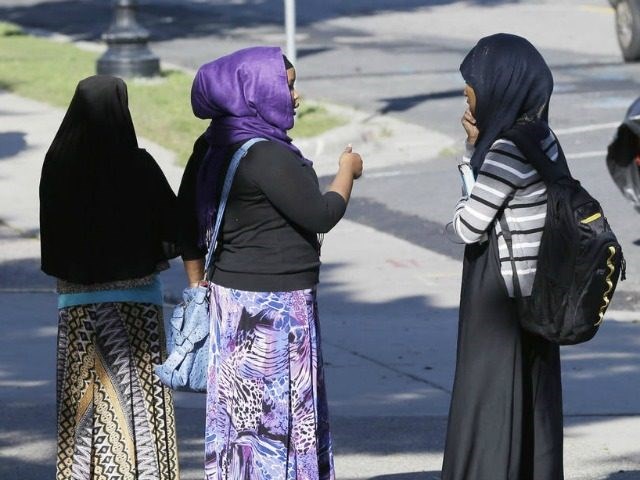One of every five refugees resettled in Minnesota by the federal government tested positive for latent tuberculosis in 2014,
according to the state’s Department of Health.
Only 4 percent of the general population in the United States tested positive for latent tuberculosis in the most recent report
provided by the Centers for Disease Control.
The April 2016 edition of the Refugee Health Quarterly, published by the Minnesota Department of Health
reports that:
Minnesota had 150 cases of TB in 2015, compared to 147 cases in 2014 (a 2 percent increase). The most common risk factor for TB cases in Minnesota is being from a country where TB is common.
TB screening is offered to all refugees during the domestic refugee health exam.
In 2014, 22 percent of refugees screened tested positive for LTBI (latent tuberculosis infection).
26 percent of all foreign born cases of tuberculosis in Minnesota were from people
born in Somalia. Somalians almost exclusively enter the state through the refugee resettlement program.
More than 70,000 refugees have been resettled in the United States annually for the past three decades by the federal government. It’s not just tuberculosis being brought in by these resettled refugees. Measles, whooping cough, diptheria, and other diseases that were on their way to eradication are also coming in across the borders of the United States.
A recent outbreak of measles in Memphis, Tennessee, a center for refugee resettlement, began at a local mosque, as Breitbart News
reported previously.
The alarming public health report from Minnesota comes on the heels of news from the Centers for Disease Control that in 2015, the incidence of tuberculosis in the United States increased.
“Data from 2015 show that the number of TB cases has increased (by 1.7 percent) nationally [in the United States] for the first time in 23 years, with a total of 9,563 TB cases reported,” the Minnesota Department of Health
reports.
As the Star Tribune, Minnesota’s largest daily newspaper,
reports:
The CDC is still trying to determine the reason for the uptick.
The goal set by the CDC, in 1989, of eliminating TB by 2010 — defined as less than one case in a million people — remains elusive. Even if the trend of declining cases had continued, the United States would not have eliminated TB by the end of this century, the CDC said.
“We are not yet certain why TB incidence has leveled off, but we do know it indicates the need for a new, expanded approach to TB elimination,” said Dr. Philip LoBue, director of the CDC’s Division of Tuberculosis Elimination, in an email.
A dual approach is needed: continue to find and treat cases of disease and evaluate their contacts, as well as identify and evaluate other high-risk persons for latent TB infection, he said.
There may be a positive correlation between the increase in the number of refugees resettled in the United States during this period and the sudden increase in the incidence of tuberculosis, a disease that many thought was on the path to eradication in the United States.
As the Centers for Disease Control
report:
In 2014, a total of 66% of reported TB cases in the United States occurred among foreign-born persons. The case rate among foreign-born persons (15.4 cases per 100,000 persons) in 2014 was approximately 13 times higher than among U.S.-born persons (1.2 cases per 100,000 persons).
“Today four states – California, New York, Texas and Florida – have more than half the nation’s active TB cases, though they have only a third of the country’s population. The four states have the highest numbers of foreign-born residents,”
according to the Star Tribune.
A person with latent tuberculosis is not infectious and does not have symptoms of the disease. A person with active tuberculosis is infectious and has symptoms of the disease.
Ten percent of those with latent tuberculosis develop active tuberculosis if not treated,
according to the World Health Organization.
TB is an airborne infectious disease caused by bacteria that spreads through the air, person to person, when someone coughs or sneezes. One in three people worldwide have latent TB, according to the World Health Organization. In the United States, up to 13 million people have been exposed to TB and could develop the disease.
Every year, tuberculosis claims 1.5 million lives worldwide and 500 to 600 in this country.
“Tuberculosis (TB) has surpassed HIV as the leading cause of death from infectious disease worldwide,” the Minnesota Department of Health
reports.
Tuberculosis is airborne and can be spread when a person active tuberculosis coughs, sneezes, or otherwise transmits the infection to a previously uninfected individual.
Treatment for tuberculosis is long and expensive. If caught early, it typically takes about nine months for a person with active tuberculosis to improve to latent tuberculosis. Not everyone diagnosed with active tuberculosis, however, improves. Mortality rates for those with active tuberculosis are much higher than health professionals would like, even in the United States.
Treating TB patients is labor intensive. To ensure that TB patients complete the course of drugs that lasts six months or longer, Directly Observed Therapy programs require a health care worker – not a family member – to watch patients with active TB swallow every dose. If a patient cannot get to a clinic, a health care worker goes to the person’s home. The worker monitors patients for side effects and other problems.
Care also involves communication and cultural challenges. In Michigan, where the number of active TB cases rose from 105 in 2014 to 130 last year, the health department reaches out to Detroit’s large Arab and Bangladeshi populations. In other parts of the state, Burmese immigrants have different needs, said Peter Davidson, Michigan TB control manager.
“Some local health departments have strong partnerships with translation services. Some rely on a less formal mechanism – a private physician or someone on staff at the hospital who speaks the language,” Davidson said.
The cost of treating an active TB case that is susceptible or responsive to drugs averages $17,000, according to the CDC. Care of patients with drug-resistant TB, which can result from taking antibiotics prescribed before TB was properly diagnosed, costs many times more: $134,000 for a multidrug-resistant patient and $430,000 for an extensively drug-resistant one.
Minnesota public health officials point to the high treatment rate of those refugees diagnosed with latent tuberculosis as a reason for optimism.
“Eliminating TB in the U.S. will require increased attention to the diagnosis and treatment of latent TB infection (LTBI),” the April 2016 Refugee Health Quarterly reports.
“Minnesota’s LTBI treatment completion rate for refugees who start treatment is one of the highest in the nation at 86 percent in 2013,” the report adds.
An alternative public health policy–one that the United States used for decades in the latter part of the nineteenth century and early twentieth century–is to test immigrants and refugees for infectious disease before they are allowed into the country.
In that earlier era, those who tested positive were sent home. Today, however, many are welcomed in and pose a risk of infecting the rest of the American population.
(Note: Valley News Live in Fargo, North Dakota was the first broadcast outlet to
report on the 22 percent incidence of latent tuberculosis among refugees in Minnesota.)

![Newly reconstructed SNU building in Mogadishu's Hamar Weyne District. [Abdi Moalim/Sabahi]](http://hiiraan.com/images/gallery/2016/may/2016523635995616619340989999899.jpg)





